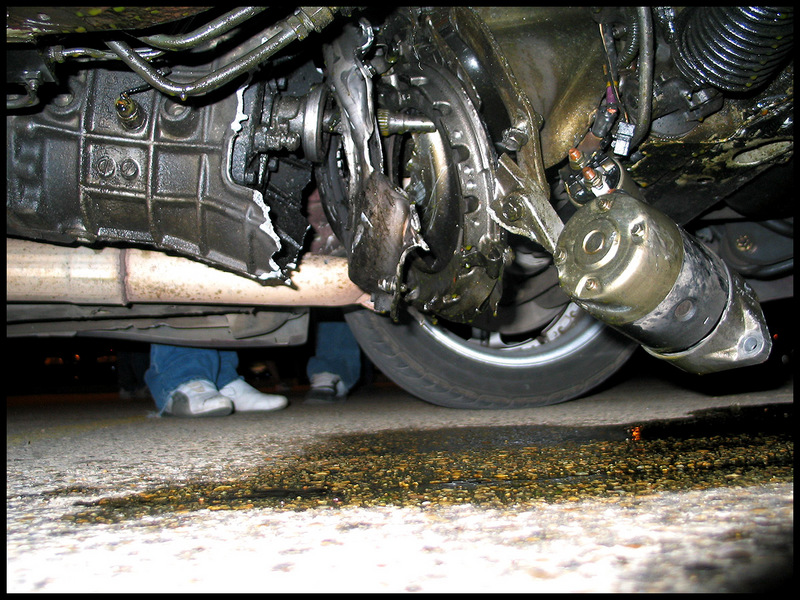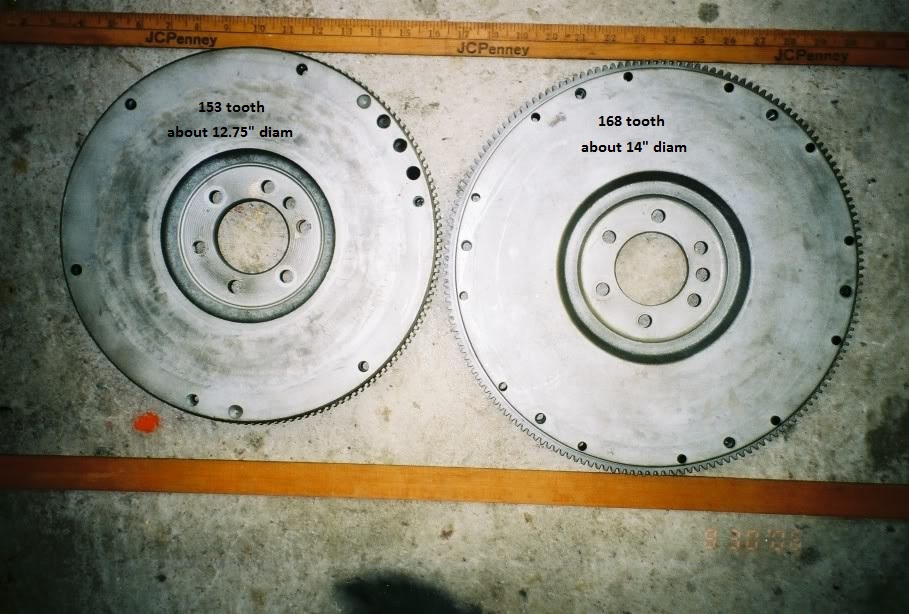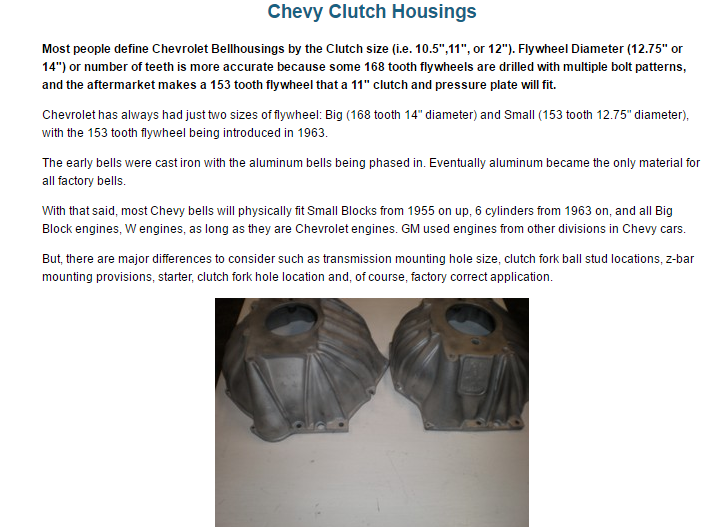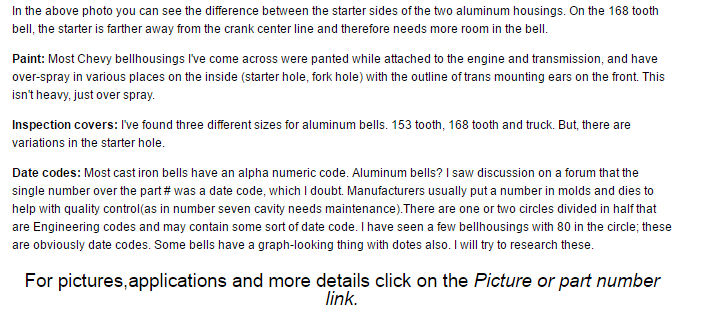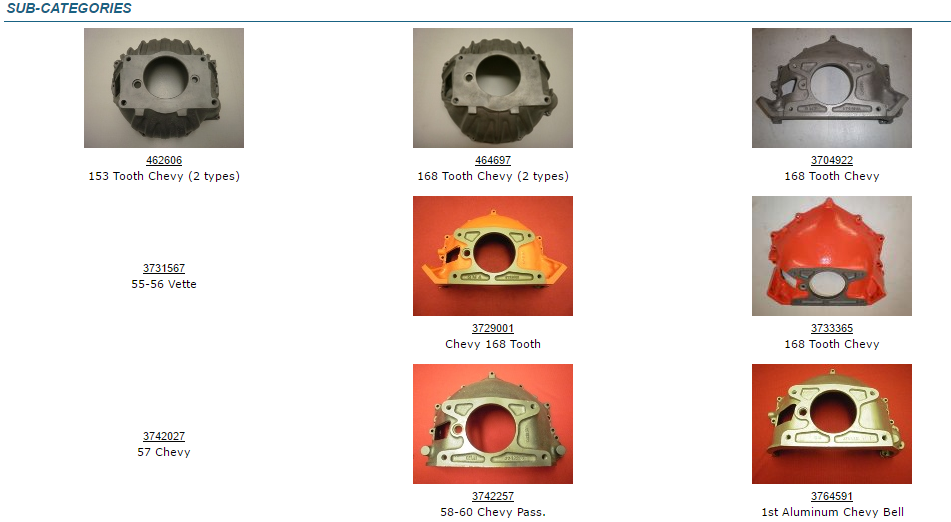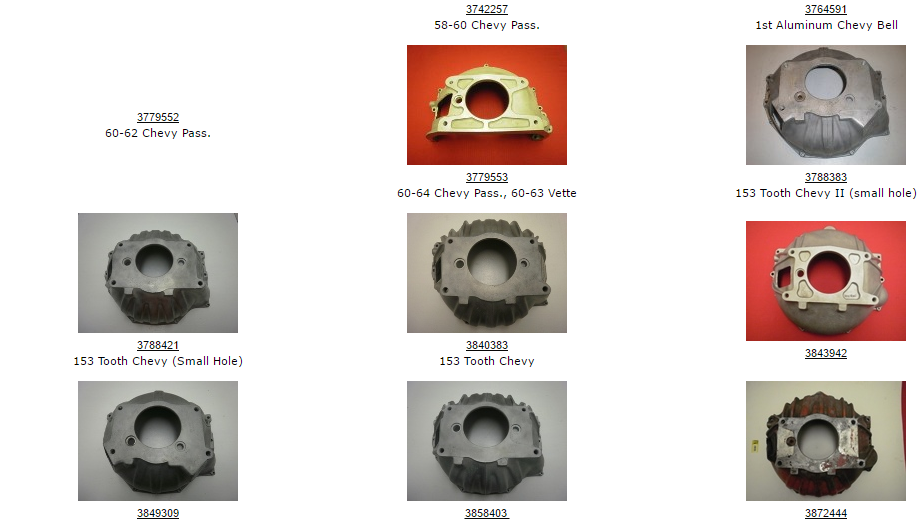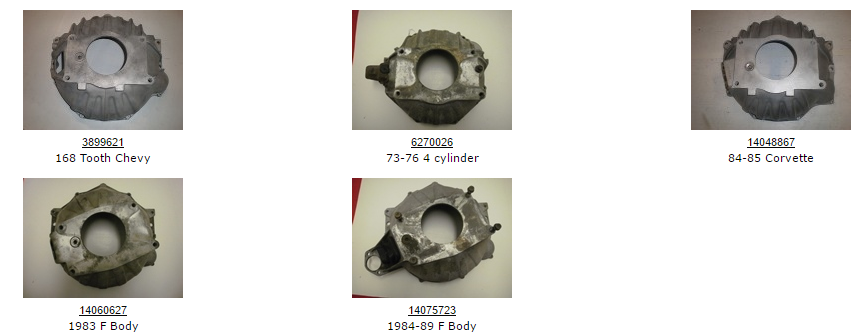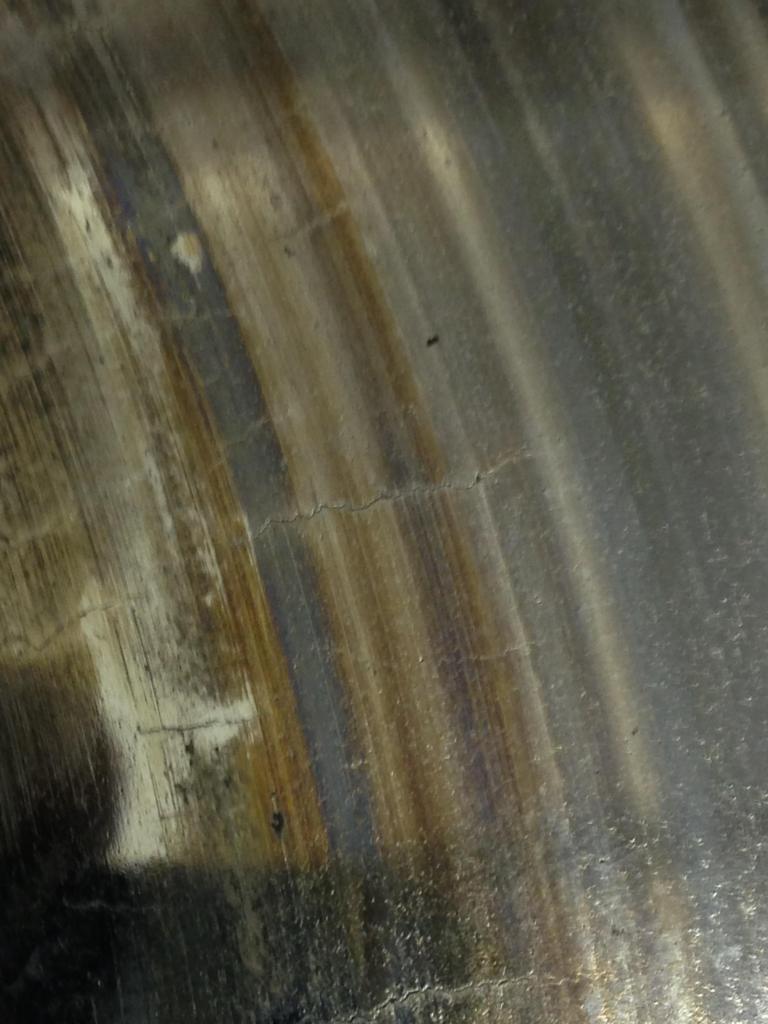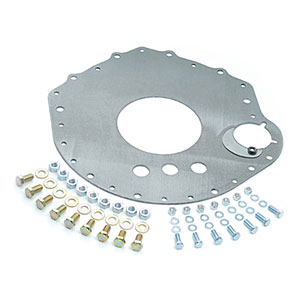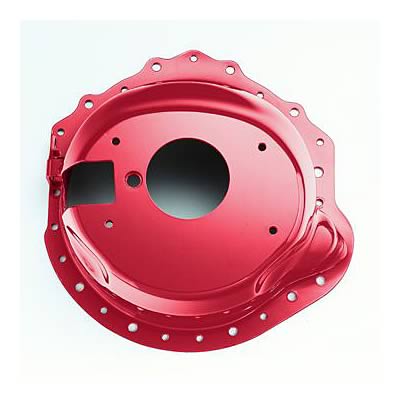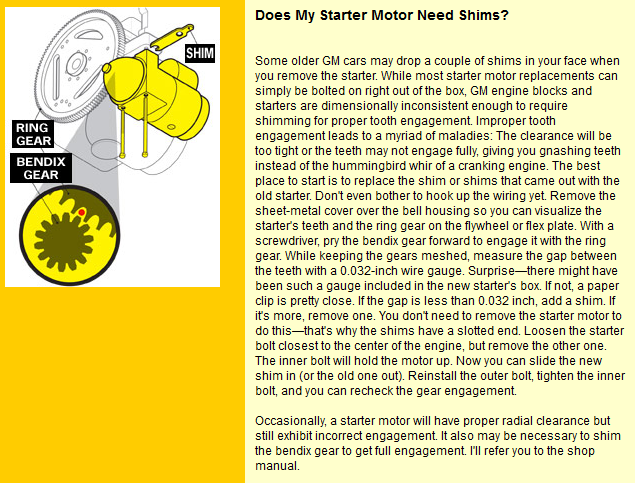The following information is based on GM production combinations, and is by no means complete and thorough. You’ll need to confirm what you actually have in your car, as things change over the years, especially with aftermarket parts, block machining, etc.
2 Flywheel sizes:
- 153 tooth, 12.75” diameter. Used on 350ci and smaller engines.
- 168 tooth, 14” diameter. Used on SBC and BBC, 400ci and larger
2 Flywheel weights:
- Internal Balance; Engine is balanced internally, and the flywheel neutrally balanced. Used on SBC 350ci and less, 427 BBC and less
- External Balance; Engine is balanced externally, and the flywheel has a counter balance weight. Used on SBC 400ci, and BBC 454 and up.
- It is possible and common to change an externally balance engine to be an internally balanced engine.
The GM engine blocks are machined to accept 2 starter bolt patterns:
- Straight across pattern; always for SBC, and always for the 153 tooth flywheel
- Diagonal pattern; always for SBC 400ci, and all BBC blocks, and for the 168 tooth flywheel.
- Both patterns; 350ci and less SBC often have both patterns, and can accomodate either flywheel size.
Finding a flywheel to fit your Chevrolet in the mid-Fifties used to be simple: There were only two possible units from 1942-'53. One flywheel (#3705385) covered all 1937-'53 cars and trucks with a 9 1/8-inch clutch disc and a six-bolt mounting pattern; the other (#3705387) covered all 1942-'53 cars and trucks with a 10-inch clutch disc and nine-bolt pattern. Both used 139-tooth ring gears for the starter. After 1953, Chevrolet changed to 12-volt starters, and the number of teeth on the ring gear was changed, but there are still just a few different flywheels used (excluding Hydra-Matic and Powerglide automatics). Some of these flywheels were used on models from the mid-Fifties up into the Eighties. We have included some of the original casting numbers for easy reference.
Flywheel #3704831
• 1954-'55 cars and trucks with 10-inch clutch Flywheel #373919
• 1958-'65 trucks with 13-inch clutch Flywheel #3739423 • 1956-'65 cars and trucks with 10 or 10 1/2-inch clutch and 11 5/8-inch bolt pattern Flywheel #3705409
• 1955-'62 cars and trucks with 10 1/2-inch clutch and 168-tooth ring gear Flywheels #3789730 and #3705410
• 1955-'62 cars and trucks with 11-inch clutch and 168-tooth ring gear Flywheels #3758595, 3714463 and 3789733
• 1955-'71 cars and 1955-'85 Chevy and GMC trucks with 11-inch clutch and 12 5/8-inch bolt pattern and a two-piece rear main seal. (1986 and newer flywheels are different because they used a one-piece rear main seal)
• 1969-'85 Blazer and Sprint
• 1966-'72 Chevelle
• 1966-'81 Corvette
• 1967-'70 Chevy II and Nova
• 1967-'74 Camaro and 1977-'81 Camaro (with Warner transmission)
• 1970-'72 Monte Carlo (except 400-cu.in. two-barrel)
• 1981 Firebird with 305 Chevy engine Flywheel #3971021
• 1964-'73 full-size Chevy cars and 1965-'73 trucks with 10- or 10.4-inch clutch and 153-tooth ring gear
• 1967-'85 Camaro
• 1964-'77 Chevelle
• 1965-'79 Chevy II and Nova
• 1965-'68 Corvette with 327
• 1978-'81 Malibu
• 1978-'79 Monte Carlo Also these other GM models with straight six-cylinder, V-6 or 262/305 V-8 Chevy engine:
• 1973-'75 Apollo
• 1968-'71 Buick Special
• 1972-'76 Ventura
• 1973-'76 Omega
• 1975-'79 Cutlass
• 1970-'76 and 1980-'85 Firebird
• 1965-'72 Tempest
• 1973-'80 Le Mans
• 1966-'71 F-85 Flywheels #3703870 and #3729004
Models with 11-inch clutch and 168-tooth ring gear
• 1969-'74 Blazer/Jimmy
• 1970-'81 Camaro
• 1970-'71 Impala
• 1965-'74 Trucks
• 1970-'75 Chevelle, Monte Carlo
• 1977-'78 Corvette (180 and 185hp)
• 1978-'81 Firebird with 305 engine
• 1978 El Camino
• 1971-'79 Nova
• 1977-'79 Omega and Phoenix with 305 engine Flywheel #3993827
• 1973-'90 Chevy and GMC Truck w/454
• 1970-'74 Chevelle and Corvette w/454
• 1971-'74 El Camino and Sprint w/454 Exceptions to the above listings are these few special flywheels that do not interchange with each other or any of the above:
• 1970-'71 Impala and Monte Carlo with 400-cu.in. two-barrel flywheel does not interchange with any other two-barrel listing
• 1967-'89 truck with 292 engine (different from all other six-cylinders)
• 1969 Corvette with a dual disc clutch
There are 3 clutch sizes:
- 10.4”; the most common (aka the “10 1/2” clutch)
- 11”
- 12”; for truck applications
The 10.4” and 11” clutch can be used on either flywheel, and your choice depends on the clutch pressure plate bolt pattern. Generally, the 11” clutch will only fit on a 168 tooth flywheel, however, aftermarket companies do sell a pressure plate for the 153 tooth flywheel and and 11” disc.
The 153 tooth flywheels generally have a 10.4” clutch.
The 168 tooth flywheel can be ordered to accept either a 10.4” or 11” clutch.
Similarly, you can use a 12” disc with an aftermarket pressure plate on a 168 tooth flywheel. McLeod sells such a package.
2 flywheel types based on rear main seal:
The early GM blocks had a 2 piece rear main seal, and the later models had a 1 piece rear main seal. They flywheels are different for each, and more info is coming on this topic.
Which flywheel diameter is right for me?
Well, that’s mostly dictated by which block you have, and which starter bolt pattern(s) you have. However, it is possible to have the block machined and tapped for the opposite bolt pattern, and/or to purchase an aftermarket mini-starter that will allow either flywheel.
Which clutch size is right for me?
Boy, there’s lots of opinions on this question. Here’s mine. Unless you’re running really high HP/Torque, and just want every last ounce of gripping power, get the 10.4” clutch. Why? The 10.4” is plenty of clutch for most applications, especially street car applications. Your radial tires will spin long before a 10.4” clutch slips. Also, the 10.4” clutch has less rotating mass, which will result in a better shifting transmission (because the addtional centrifical force of the larger disc will keep the input shaft spinning, and the input shaft must slow down in order for a smooth shift). Further, bear in mind that clutch technology has improved dramatically over the years. Even 30 years ago, the 10.4” clutches were used behind the Hemi engines. If Mopar felt that a 10.4” clutch was good enough for them back then, it stands to reason that today’s much improved clutches will work even better.
If you’re running slicks, and a high HP engine, then by all means, the additional gripping power is a good thing.
